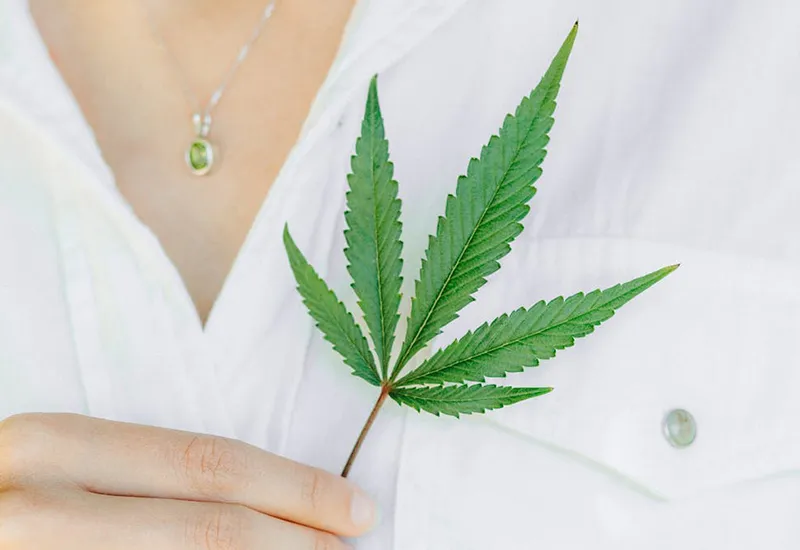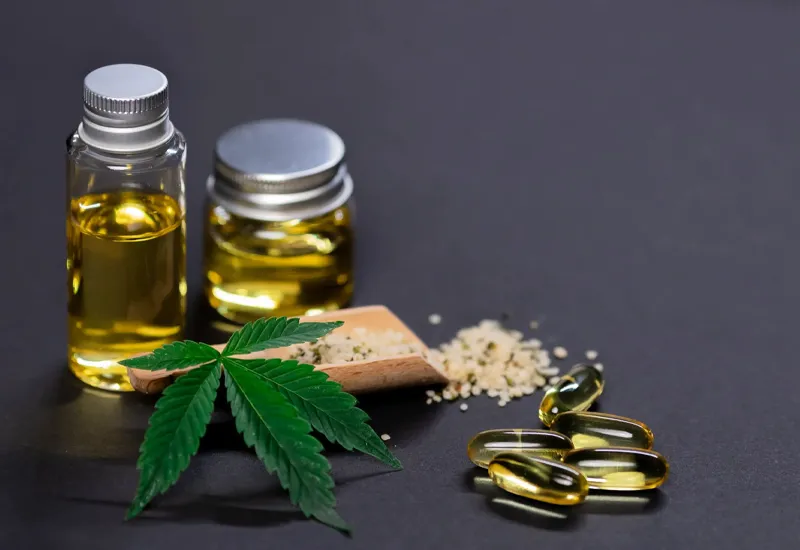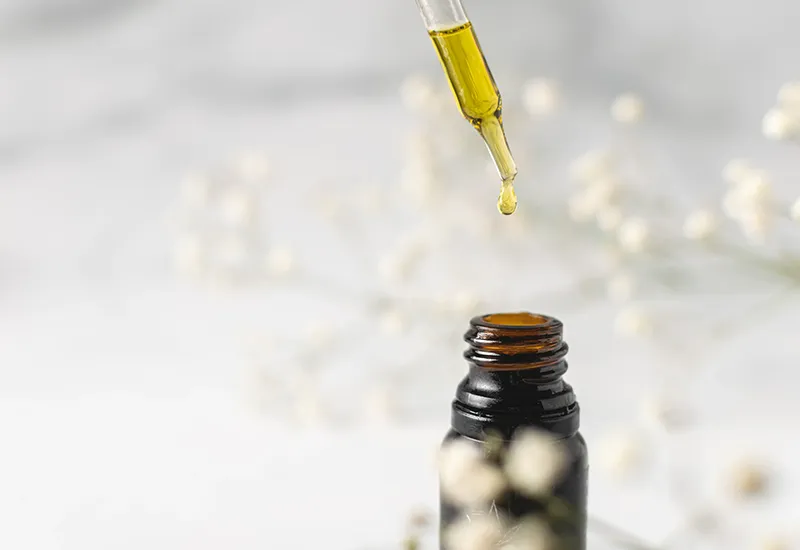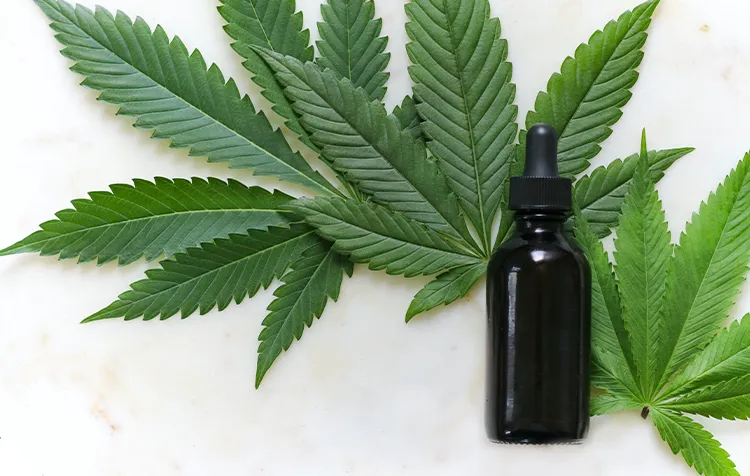You want to know all CBD species? Then you've come to the right place! CBD against sleep disorders, stress or chronic pain - the natural active ingredient cannabidiol is recommended in testimonials against all kinds of physical symptoms.
Based on the great demand, there are now many different forms of CBD products. This often makes it difficult to keep track. Full spectrum or isolates? Or rather broad spectrum? What exactly does it all mean and what is the difference?
In this article I would like to give you answers to these questions and explain the different types of CBD and their characteristics. Let's go!
Here you can find a short overview in advance:
Definition: What is CBD and how does it work?
Before we move on to the CBD species, I would like to briefly explain what cannabidiol (CBD for short) actually is. It is a Active ingredient extracted from the flowers of the hemp plant.
CBD belongs to the Cannabinoid family, a type of active ingredient that was (unsurprisingly) discovered in connection with cannabis research. The hemp plant contains over 100 different cannabinoids, such as CBD and THC. It also contains the active ingredient CBG, although the Effect of cannabigerol (CBG) and cannabidiol (CBD) is very similar.
Although research on CBD is by no means complete, it is currently among the most studied cannabinoids. Studies to date indicate a wide range of applications - CBD is said to be especially antispasmodic, analgesic, anti-inflammatory, antianxiety and antipsychotic. act, which is why, for example, it is often recommended to to become more relaxed.
General types: What CBD products are available and are they legal?

Although CBD is legal as a pure substance in Germany, it has so far not yet been not approved as a food or dietary supplement. This means that not all CBD products are available without a prescription. Here I would like to name the different product types and briefly explain which ones you can get without a prescription:
- Prescription CBD Products: Oral CBD products, such as finished medicines or medicinal CBD oil, are only on medical prescription available. Dried CBD flowers, which are used to make tea, for example, even require a narcotic prescription due to their THC content.
- Non-prescription CBD products: Thus, only CBD products labeled as cosmetics for external use are freely available on the market. These include CBD mouth or aroma oils or ointments, creams or gels enriched with CBD oil, all of which contain CBD as a pure substance and whose THC content is below 0.2 %.
CBD Species: What are the different forms of CBD oils?

Now you have already learned about some types of CBD products. But especially among the CBD oils exist other, different forms, which are mainly in their chemical composition very different from each other.
There are...
- Oil with CBD isolate
- Full spectrum CBD
- and broad spectrum CBD.
But what exactly are the different types of CBD oil and how do they differ in detail? The specifics of the mentioned CBD types I will now explain to you in the following.
CBD Isolate
Based on the name, you can almost guess: CBD isolates are characterized by the fact that they are no other ingredients of the hemp plant except just CBD contain. In a complex process, terpenes, flavonoids and cannabinoids are filtered out of hemp extract until (99 percent) only pure CBD remains.
After the purification process is complete, CBD isolate looks like granulated sugar and can be further processed. For example, with the help of isolates various oils enriched with pure CBD be. Due to the long purification process, CBD products made from isolates contain virtually no THC.
Full spectrum oil
The exact opposite of CBD isolate is full-spectrum CBD. In this - as the name suggests - in addition to CBD are namely many more active ingredients of the cannabis plant contained. So in the full spectrum oil also contains Other cannabinoids, such as CBN, CBG, as well as other hemp ingredients such as terpenes and flavonoids.
But beware! Full spectrum oil actually contains the full spectrum of cannabis active ingredients. This means that in it also the psychoactive ingredient THC present is. Unlike CBD, the notorious THC leads to a state of intoxication and makes "high" after a certain amount. THC is accordingly also the ingredient that is responsible for cannabis being subject to the regulations of the Narcotics Act.
However, there is usually never enough THC in full-spectrum oil to induce an actual state of intoxication. However, even a small amount of THC can cause an appropriate Drug test a positive result cause.
Broad spectrum oil
Last but not least among the CBD types is the broad spectrum oil. It contains, as well as full spectrum oil, in addition to CBD also other active ingredients of the cannabis plant.
This information always leads to confusion and confusion between broad spectrum and full spectrum oils. But there is a crucial difference between the two species: their respective THC content.
While full-spectrum oil, as mentioned above, usually contains psychoactive THC in addition to all the other plant compounds, this is usually not the case with broad-spectrum oil. The latter contains CBD as well as other cannabinoids, terpenes and flavonoids, but no THC.
For full and broad spectrum: what is the entourage effect?
If you've ever heard of full- or broad-spectrum CBD, you've probably heard a certain term, too: the entourage effect. What exactly is it all about?
The fact that the term entourage effect usually comes up in connection with full- and broad-spectrum CBD oil is no coincidence. Because it is the assumption that the many different ingredients of the cannabis plant, which are contained in both CBD product forms, have an additional effect when used together. This potential synergistic mode of action is called the entourage effect.
Why only the potential? The existence of this effect has not yet been officially confirmed and is accordingly still considered controversial in part. Thus, before it can be considered fully confirmed, more in-depth research is needed.
Not all CBD is created equal

So now you've gotten to know many different types of CBD. The researched effect profile of cannabidiol looks very promising - no wonder that the active ingredient is now available in many different forms.
With so many CBD products already on the market, it is often almost difficult to keep track of them all. Therefore, make sure you take the time to take a close look at the benefits of the different products.
I really hope that I could give you an overview with the information from this article. Do you have any questions or suggestions? Then I look forward to your comment.
Stay healthy,

PS: There are so many Fields of application for CBD with great potential. In the linked article, you will now next learn about the purposes for which the active ingredient is basically used.





